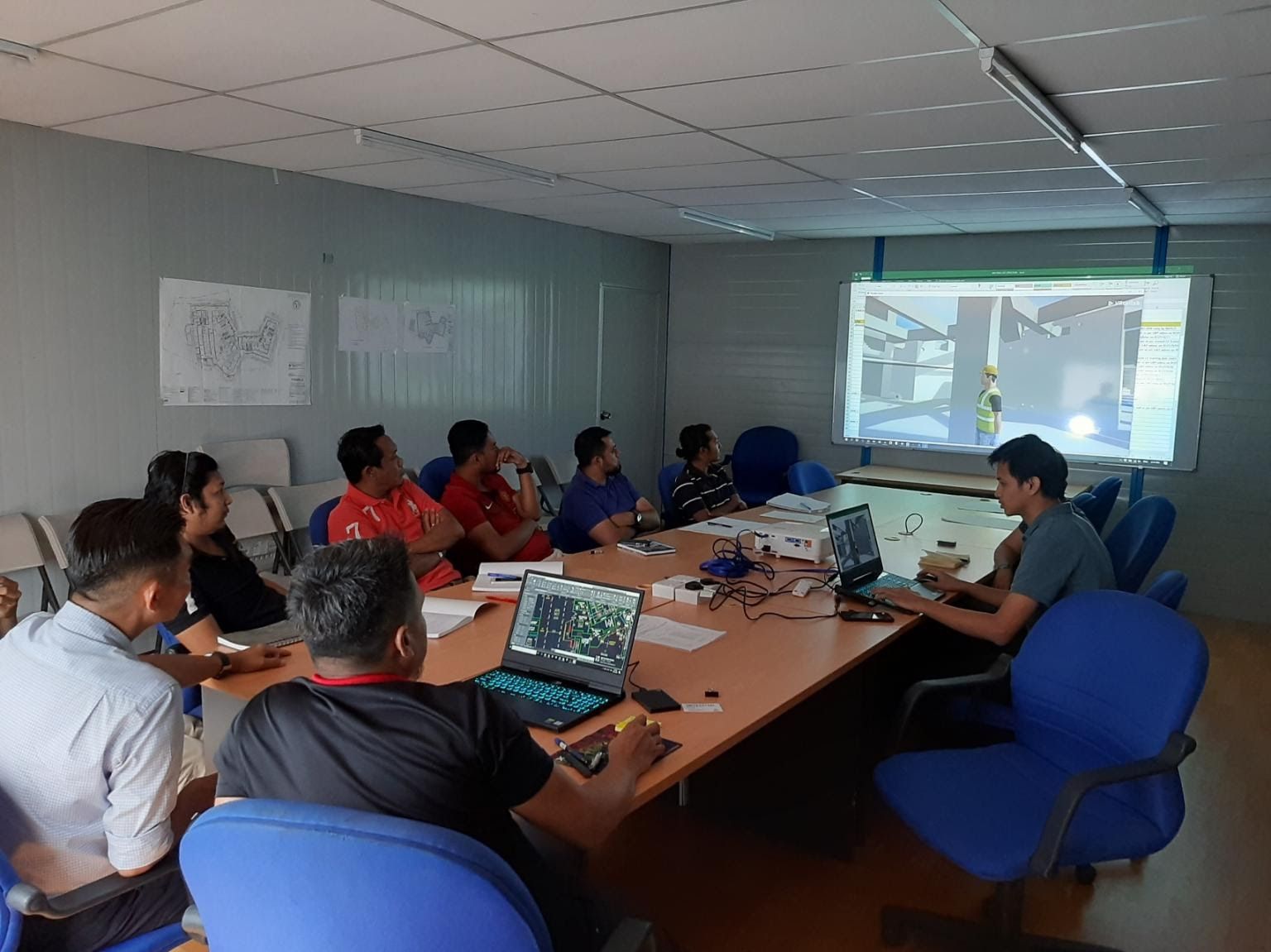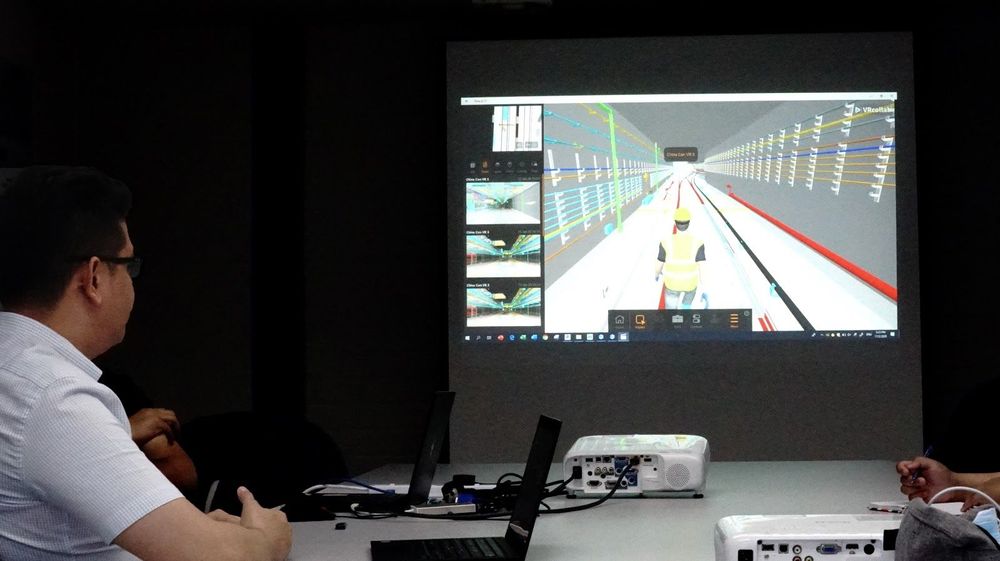Case Study: How China Construction Uses Virtual Reality in Coordination Meetings
We spoke with CCDC’s Head of Corporate VDC/BIM, Rob Sanchez, to understand their transition into BIM & VDC, and how they utilise virtual reality and INFR AI in their processes.
INFR AI Official Account

Established in 1992, China Construction (South Pacific) Development Co. (CCDC) is a regional subsidiary of China State Construction Engineering Corporation (CSCEC). CCDC started using BIM in 2014. They can also be regarded as one of the earliest companies to drive digitalisation in Singapore’s AEC industry. CCDC has a strong BIM modelling team of 150 people in Singapore and a corporate team of 30 people including BIM coordinator and manager. It is a BCA-registered contractor of A1 status and enjoys unlimited tendering capability.
With over 32 projects and technology advancements, CCDC aims to be the leader of a digitalisation in construction.
We spoke with CCDC’s Head of Corporate VDC/BIM, Rob Sanchez, to understand their transition into BIM & VDC, and how they utilise virtual reality and INFR AI in their processes.
Who is Rob Sanchez?

With over 12 years in construction and project management, Rob Sanchez brings value-added expertise in utilizing BIM with extensive levels in BIM workflow. He believes BIM provides a single source of truth of data and worked with local thought leaders to drive the initial BIM adoption in Singapore.
Life Before BIM
Before any form of digitalisation, professionals of different trades would bring their 2D drawings and try their hardest to communicate what’s on paper. Showcasing designs was up to each individual’s communication and interpretation skills and as you know, all of us communicate very differently. This caused issues where the end result might not resemble what they initially imagined.
BIM Trends in Singapore
Building and Construction Authority (BCA) Singapore drafted a BIM Roadmap in 2010 with the objective that at least 80% of the construction industry uses BIM by 2015. It is currently year 2020 and BIM is mandatory in all tender requirements. On top of BIM, Virtual Design & Construction (VDC) is seen to be a rising requirement for tenders.

There was a gap in BIM integration back in 2014 when CCDC started heavily investing in BIM. Now, they are leading on the VDC front, implementing it in (almost) all their projects.
“VDC usually means VR is involved. For us, even without VR requirement in tenders, we still use it in our daily process. It really helps give us a better understanding of the building,” Sanchez mentioned.
Challenge: Difficult Coordination Within Autodesk® Revit®
It’s been years since CCDC first integrated BIM into their processes. Since its first BIM model and hundreds of training hours later, CCDC is equipped with experienced BIM professionals. Their team is highly knowledgeable in BIM software and its workflows – Autodesk® Revit® and Autodesk® Revit® – but not all their clients and stakeholders are familiar with BIM. Therefore, they often face friction in understanding and communication during coordination meetings where all stakeholders are involved.
“A couple of months ago, I visited the KL (Kuala Lumpur) office in Malaysia and sat in for one of their technical meetings. They were trying to navigate around Autodesk® Revit® to showcase their design,” Sanchez shared his experience with us, “and they struggled in trying to cut the section and showing issues to clients.”
To improve the meeting, Sanchez spent 5 minutes downloading, installing and setting up INFR AI on their computer. He then imports the same Autodesk® Revit® file into INFR AI before easily navigating software to section cut the model and dive into the issues.

“With INFR AI, it is very smooth and easy to navigate. You don’t need on-hands training to familiarize with the software. We initially did a training module to train our team but (we) scrapped it because of how easy it (INFR AI) is to start using it.”
Benefits of Using INFR AI in Coordination Meetings

CCDC’s BIM Manager, Jomar Guevara, joined the conversation and shared that INFR AI is mostly used for coordination especially when these meetings happen online. Using INFR AI, it is more convenient and easier to run coordination meetings.
According to Sanchez, INFR AI helped reduce time taken to resolve issues during these meetings, improving the team’s productivity. Based on his calculation, Sanchez speculated it could cut down coordination time by 50%.
Visualisation is better compared to the BIM software used for modelling, making it more pleasing to have a walkthrough during meetings. INFR AI makes spotting and resolving issues easier.

INFR AI also gives the option to view BIM models in VR. It puts the user in an immersive 1:1 scaled environment, allowing clients to walk – figuratively – in their building before it’s even constructed. Not only that but VR gives their team a better understanding of how the building is going to turn out.
“INFR AI plays a big role in our processes. We use it a lot to showcase our designs to clients and resolve issues during coordination meetings.”
In general, VDC has enhanced CCDC’s process. VR, itself, has helped CCDC get a better understanding of building design, making it easier to resolve issues. It all leads to an increase in our team’s productivity and a reduction in cost for reworks.
Redefining Collaboration in Architecture, Engineering and Construction.
Want to use INFR AI in your Virtual Design and Construction process? Try INFR AI today & Get 20% Off Your First Year: Free Trial

